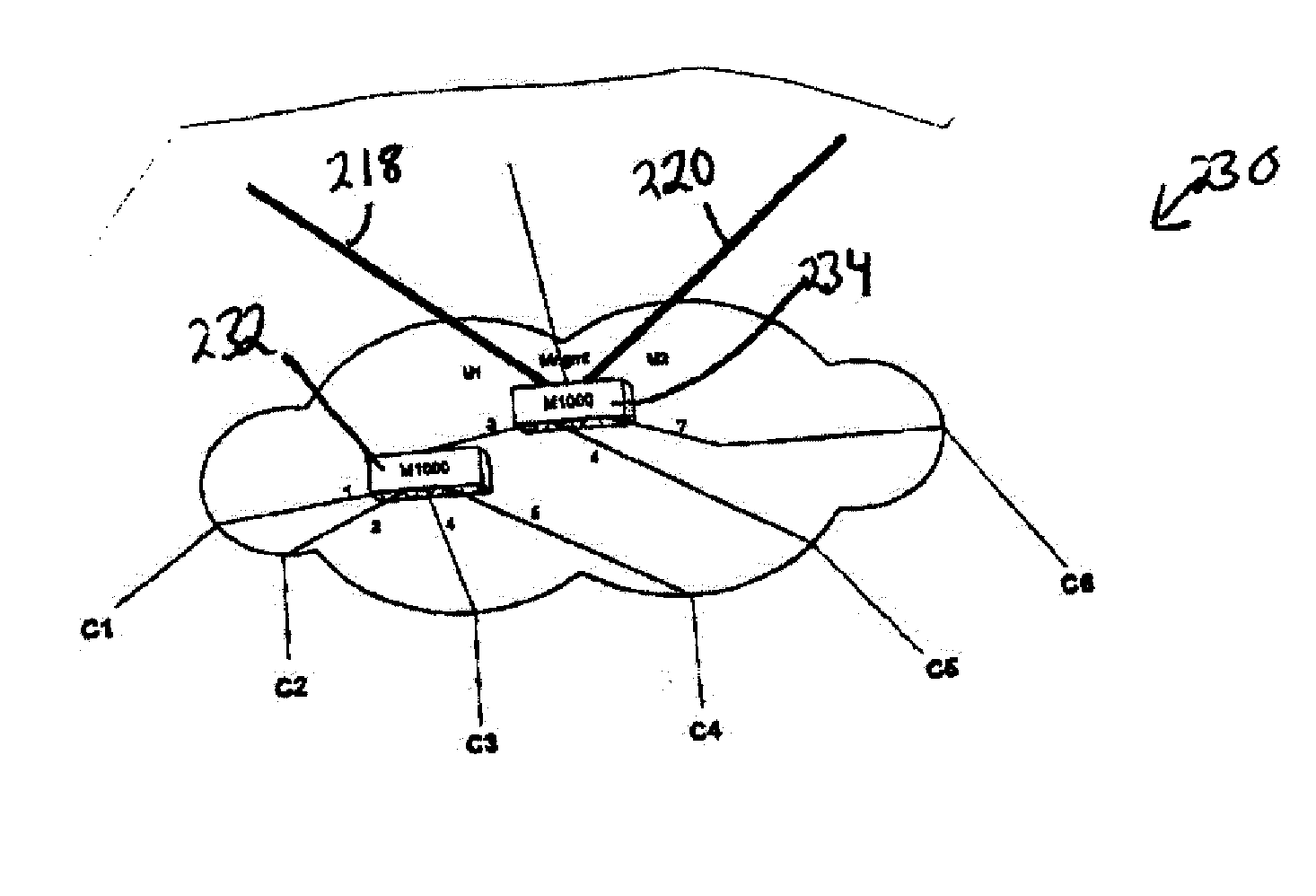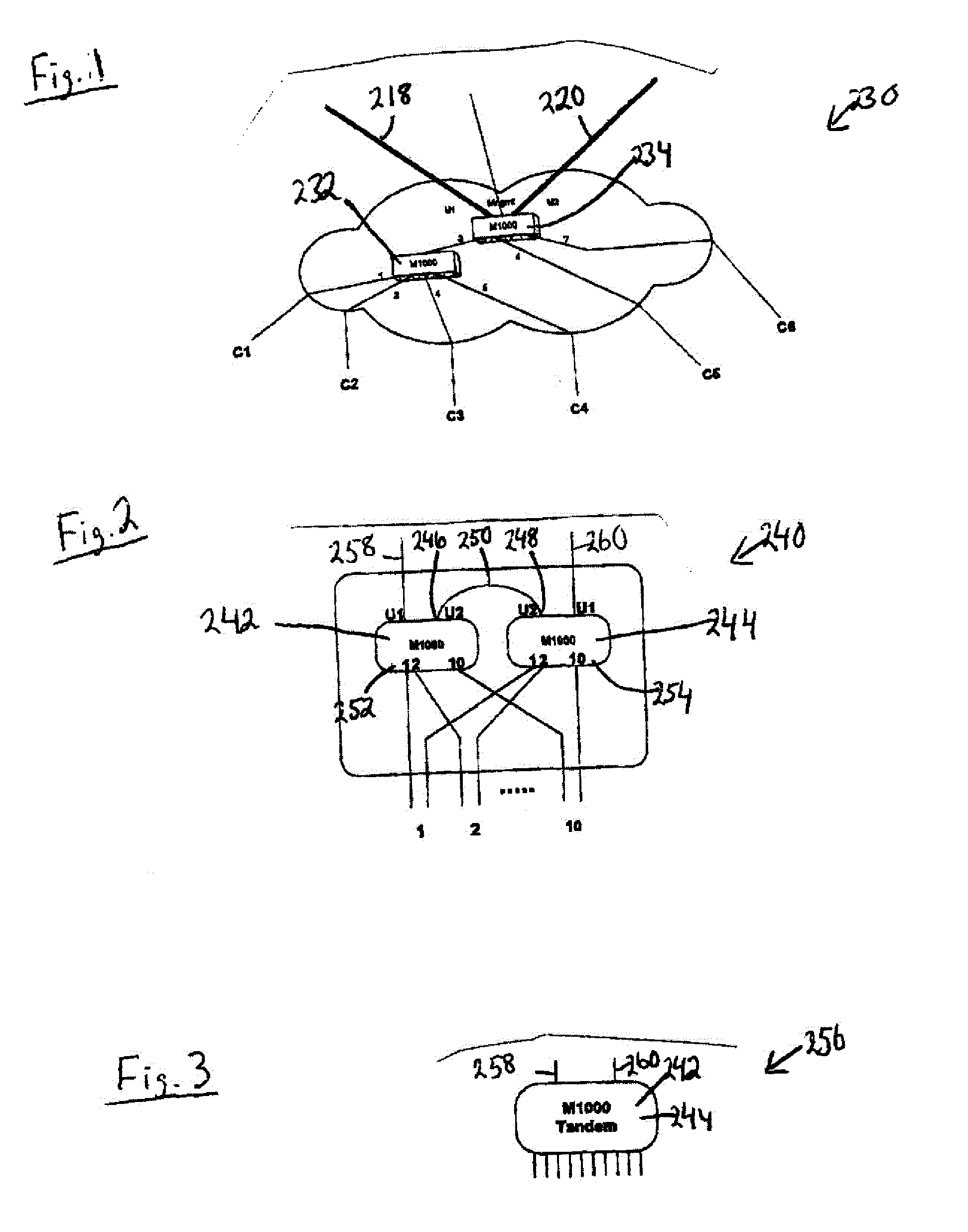Method of sending a packet through a node
- Summary
- Abstract
- Description
- Claims
- Application Information
AI Technical Summary
Benefits of technology
Problems solved by technology
Method used
Image
Examples
Embodiment Construction
[0018] In general, the method of the present invention includes the steps of adding a tag and port numbers when the packet moves upwardly in a tree topology towards edge equipment such as a router or switch, i.e. in an ingress direction, so that each node shifts previous port numbers and adds a port number before forwarding the node. When the packet moves from a router downwardly in the tree topology, i.e. in an egress direction, each node removes the port number of the outgoing access port from the tag and shifts the subsequent port numbers within the tag.
[0019] With reference to FIG. 1, the physical topology 230 may include Marvin node units 232, 234. A tree structure may be used to aggregate the customer traffic in several steps towards a hub node. A daisy-chain of Marvin multiplex units 232, 234 can be used to simplify the build out when a tree is unsuitable or to reduce the amount of fiber or copper links as well as the number of router or switch interfaces. The units 232, 234...
PUM
 Login to View More
Login to View More Abstract
Description
Claims
Application Information
 Login to View More
Login to View More - R&D
- Intellectual Property
- Life Sciences
- Materials
- Tech Scout
- Unparalleled Data Quality
- Higher Quality Content
- 60% Fewer Hallucinations
Browse by: Latest US Patents, China's latest patents, Technical Efficacy Thesaurus, Application Domain, Technology Topic, Popular Technical Reports.
© 2025 PatSnap. All rights reserved.Legal|Privacy policy|Modern Slavery Act Transparency Statement|Sitemap|About US| Contact US: help@patsnap.com



